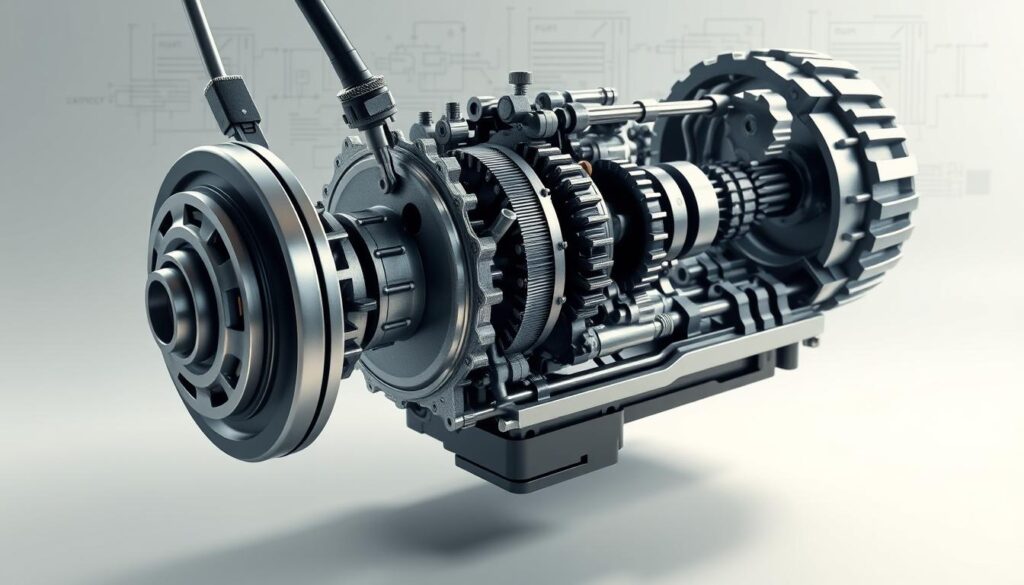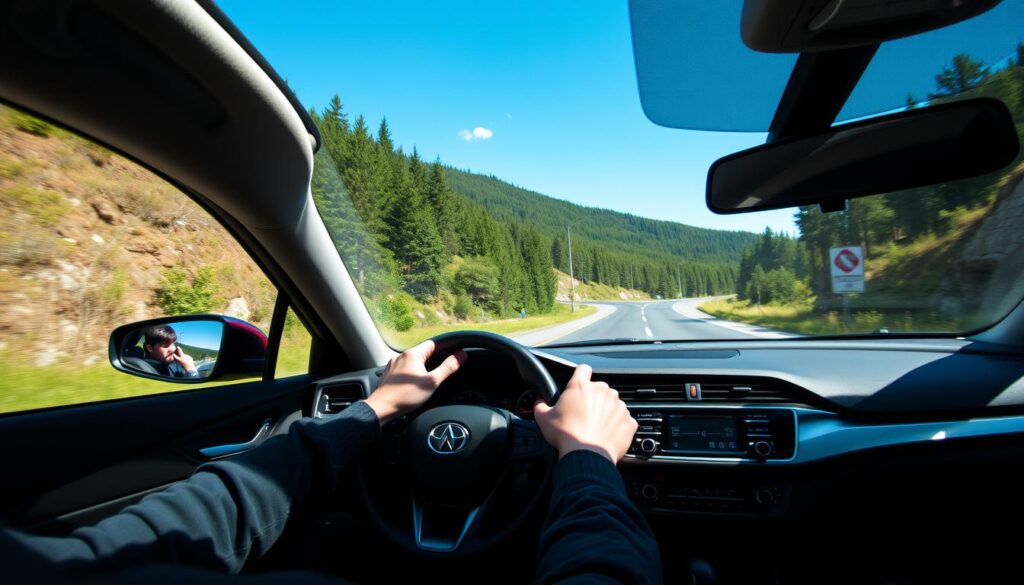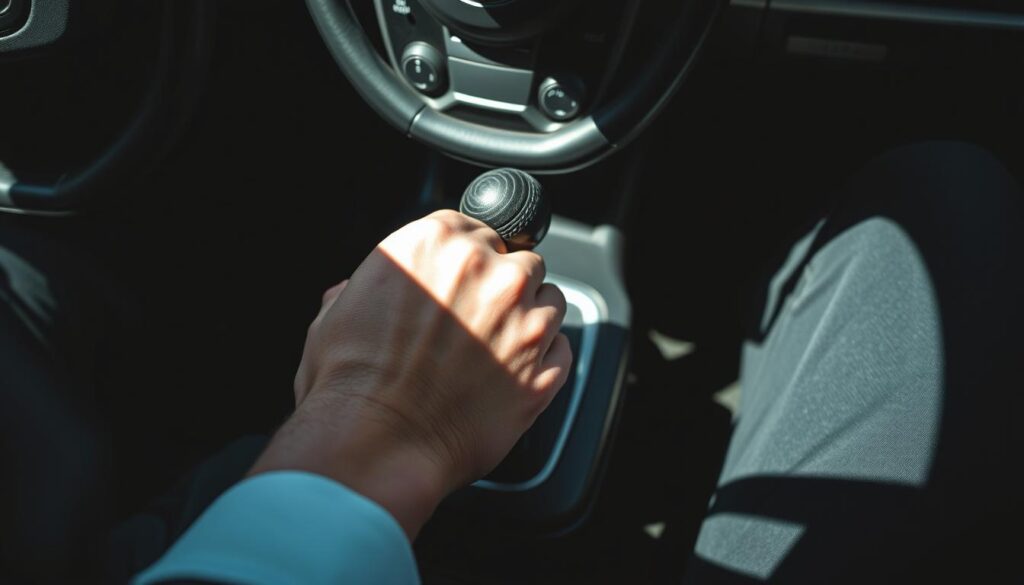How to Drive a Manual Car (Step-by-Step)
Did you know that less than 3% of new cars sold in the U.S. today offer a manual transmission? This makes the skill of operating a stick shift a rare and valuable talent.
Mastering this form of driving unlocks a more connected and engaging experience with your vehicle. You gain direct command over the engine’s power, which can lead to better performance and fuel economy.
If the idea of using a clutch and gear stick feels intimidating, you’re not alone. But with clear guidance and practice, anyone can learn. This guide is designed for complete beginners and those switching from automatic vehicles.
We will break down every step into simple instructions. You’ll learn about the controls, essential techniques, and important safety tips. Our goal is to build your confidence behind the wheel of a stick-shift car.
Remember, this is a skill that improves with time. Be patient and celebrate your progress as you move toward mastery.
Key Takeaways
- Operating a manual transmission provides a more interactive and controlled driving experience.
- While initially challenging, the skill is attainable with proper instruction and practice.
- This guide offers a step-by-step approach tailored for beginners.
- You will learn to handle various road conditions, from hills to city traffic.
- Protecting your vehicle’s clutch and transmission is a key part of the process.
- Patience is essential as you develop this valuable skill over time.
Understanding the Basics of Manual Vehicles

Before getting behind the wheel, it’s crucial to familiarize yourself with the unique controls that define manual transmission operation. These vehicles offer a more hands-on driving experience that many enthusiasts prefer.
Overview of Manual Transmission
A manual transmission gives you direct command over gear selection. Unlike automatic cars that shift for you, you choose the optimal gear for each situation.
The system uses a clutch to connect and disconnect the engine from the wheels. This allows smooth gear changes without damaging the transmission. Mastering this coordination is the foundation of stick shift driving.
Key Controls and Functions
You’ll find three pedals instead of two. The clutch pedal sits on the far left, operated with your left foot. Pressing it disengages the engine from the gearbox.
The middle pedal is the brake, while the accelerator remains on the right. Both use your right foot. The gearstick typically offers five or six forward gears plus reverse.
Lower gears provide more power for starting and climbing. Higher gears offer efficiency for cruising. You must press the clutch fully before changing gears.
The handbrake secures your vehicle when parked. It’s especially helpful for hill starts. The steering wheel controls direction while often housing additional functions in modern cars.
Getting Started: Preparations and Safety Checks
Before the engine ever comes to life, a series of crucial checks ensure your safety and success. Taking a few moments to properly set up your driving environment makes the learning process much smoother.
Adjusting Your Seat and Mirrors
Begin by finding the perfect driving position. You should be able to fully depress the clutch pedal while maintaining a comfortable bend in your knee. Your arms should reach the steering wheel without straining.
Next, carefully adjust your seat position for optimal control. Make sure you can operate all three pedals without stretching or cramping.
Mirror adjustment is equally important. Position your side mirrors to minimize blind spots while showing a small portion of your vehicle’s sides. The rear-view mirror should frame your entire back window.
Verifying Neutral Gear and Engaging the Handbrake
One of the most critical safety steps is confirming your gear selector is in neutral. Gently wiggle the gearstick from side to side—it should move freely without resistance.
Always engage your handbrake firmly before starting the engine. This prevents unexpected rolling, especially on inclines. Double-check that your seatbelt is properly fastened for maximum safety.
Locate your key or push-button start and familiarize yourself with essential controls like turn signals and lights. These preparation steps build confidence and prevent confusion when you begin driving.
How to Drive a Manual Car
The moment of truth has arrived: it’s time to bring the vehicle to life and begin moving. This process requires careful coordination between your hands and feet.
Starting the Engine and Engaging First Gear
Begin by pressing the clutch pedal completely to the floor with your left foot. This safety step is required in modern vehicles. Turn the key or push the start button to fire up the engine.
While keeping the clutch depressed, move the gear selector into first gear. This position is typically top-left on the shift pattern.
Clutch and Accelerator Coordination
The critical part comes next. Gently press the accelerator with your right foot to raise engine revs slightly. Begin to slowly release clutch pressure.
You will feel a vibration through the pedal—this is the “bite point.” Pause briefly here. Release the handbrake, and the car will creep forward.
Continue lifting your left foot completely off the clutch pedal while adding more accelerator. You are now successfully moving!
Avoiding Common Stalls and Missteps
Stalling happens when the clutch is released too quickly or without enough engine power. It’s a normal part of learning.
If you stall, don’t panic. Follow this simple recovery process:
- Press the brake pedal to ensure the vehicle is secure.
- Turn the engine off and return the gear lever to neutral.
- Take a breath and start the sequence again.
Practice finding the bite point on flat ground. Smooth driving manual car starts come from patience and repetition.
Mastering Clutch Control and Gear Shifting
Once you’ve mastered starting the vehicle, the next critical skill involves perfecting your coordination between the clutch and gear selector. This coordination separates hesitant beginners from confident operators.
Identifying the Clutch Bite Point
The bite point is where the magic happens. This is the specific spot in the clutch pedal‘s travel where you feel vibration as the plates connect. Finding this point is essential for smooth starts.
Each vehicle has a unique bite point. Some are higher in the pedal travel, others lower. Practice by slowly lifting your foot until you feel the car strain against the handbrake.
Mastering this foot clutch technique prevents stalling. The slower you release clutch pressure at this critical point, the smoother your acceleration becomes.
Smooth Transitions Between Gears
Shifting to higher gear positions is simpler than starting from stop. Press the clutch pedal fully with your left foot, then move the selector to the next gear.
Since the vehicle is already moving, you can release clutch more quickly. Maintain steady accelerator pressure with your right foot during the shift.
Listen to your engine’s sound to know when to shift. High revs mean shift up; struggling sounds mean shift down. This rhythm makes drive manual operation feel natural.
With practice, clutch control becomes instinctive. You’ll develop a smooth rhythm that makes every gear change seamless and confident.
Driving Manual on Different Road Conditions

Navigating various terrains requires adapting your stick shift techniques to maintain smooth control. Each environment presents unique challenges that test your coordination between the clutch, gear selector, and pedals.
Handling Hills and Inclines
Hill driving demands careful clutch management. When ascending, listen to your engine—if it strains, shift to a lower gear for more power. This prevents stalling and maintains your speed.
For hill starts, the handbrake is essential. Find a strong bite point with extra accelerator pressure. Feel the car pull forward before you release handbrake. This technique prevents rolling backward.
Downhill sections benefit from engine braking. Stay in a lower gear to control your speed without overusing the brake pedal.
Driving in Traffic and Urban Settings
City driving tests your clutch control with frequent stops. Avoid holding the bite point to creep forward—this wears the clutch prematurely.
Instead, come to complete stops and use your brake. Leave space between vehicles to reduce constant gear changes. This makes urban driving manual less stressful.
Wet or icy road conditions require extra smoothness. Gradual inputs prevent wheel spin and maintain traction. Adapt your technique for each road surface you encounter.
Advanced Driving Techniques

Once you feel comfortable with the basic operation of a stick shift, a world of advanced techniques opens up. These skills can make your driving smoother, more efficient, and even more enjoyable.
Heel-and-Toe Technique Explained
This advanced method lets you brake and downshift at the same time. It involves using different parts of your right foot.
The left side of your foot applies pressure to the brake pedal. The right side briefly taps the accelerator to raise engine revs. This “rev-matching” creates a seamless shift into a lower gear.
While not essential for daily driving, it’s a satisfying skill for spirited drives. It can also reduce wear on your transmission.
Optimizing Gear Usage for Better Fuel Efficiency
One major advantage of a manual transmission is control over fuel economy. Smart gear selection makes a big difference.
Shift to a higher gear early when you are not in a hurry. Keeping the engine RPM low saves fuel. Use your top gear for steady highway speed.
Anticipate traffic to maintain momentum. This avoids constant acceleration and braking. For quick power, downshift before you need to pass another vehicle.
Driving Style Comparison
| Technique | Best For | Fuel Impact | Skill Level |
|---|---|---|---|
| Early Up-Shifting | City & Highway | High Savings | Beginner+ |
| Heel-and-Toe | Performance Driving | Neutral | Advanced |
| Anticipatory Shifting | All Conditions | Significant Savings | Intermediate |
Remember, smooth inputs are key. Avoid straining the engine by accelerating in too high a gear. Listen to your car; it will tell you when to shift.
Maintenance Tips to Prevent Clutch and Gearbox Damage
Your clutch is a wear item, but with proper care, it can last for over 100,000 miles. Premature replacement is costly, often starting at $400 and rising significantly. Simple, consistent practice protects your investment.
The most damaging habit is “riding the clutch.” This means resting your foot on the pedal while driving or holding the car at the bite point in traffic. Both actions create friction and heat, wearing the plates quickly.
Best Practices for Long-Lasting Clutch Performance
When stopped, shift to neutral and take your foot completely off the pedal. Never use the clutch to hold your vehicle on a hill. Always use the handbrake or foot brake instead.
During starts, keep engine revs moderate. Excessive throttle while engaging the clutch causes slippage and wear. Press the clutch fully to the floor with each shift and release it smoothly.
Routine Vehicle Health and System Checks
Schedule regular inspections. A professional can check your clutch hydraulic fluid and transmission fluid. Low or dirty fluid leads to poor performance and potential damage.
Pay attention to warning signs over time:
- A burning smell
- Difficulty shifting gears
- The clutch pedal feels different
- The engine revs but the car doesn’t accelerate
Addressing issues promptly can prevent major repairs. Taking time for these checks keeps your manual car running smoothly for years.
Conclusion
You’ve now reached the final stage of your manual transmission journey. This guide has provided all the essential steps for confident operation.
Remember that consistent practice is the key to mastery. The coordination between your left foot on the clutch pedal and your right foot on the accelerator will become natural over time.
Don’t get discouraged by initial challenges. Every smooth start and clean gear change builds valuable muscle memory. The experience of controlling your vehicle so directly is incredibly rewarding.
Make sure to continue practicing in safe environments. Empty parking lots are perfect for mastering first gear starts and reverse gear maneuvers.
Your new skills will serve you well in all types of vehicles. The ability to drive manual opens up a world of driving enjoyment and vehicle options.
Stay safe, be patient with yourself, and enjoy the journey ahead with your manual transmission car!
FAQ
Is it difficult to learn to drive a manual car?
What is the most common mistake new drivers make?
How do I prevent rolling back on a hill?
When should I shift gears?
Can I skip gears when shifting?
How can I make my clutch last longer?

Adam Peter is a finance, travel, and automotive writer with over a decade of experience. He creates clear, practical content to help readers manage their money, explore the world with confidence, and make informed decisions about cars and travel gear. His work blends expert insight with real-world usefulness.




